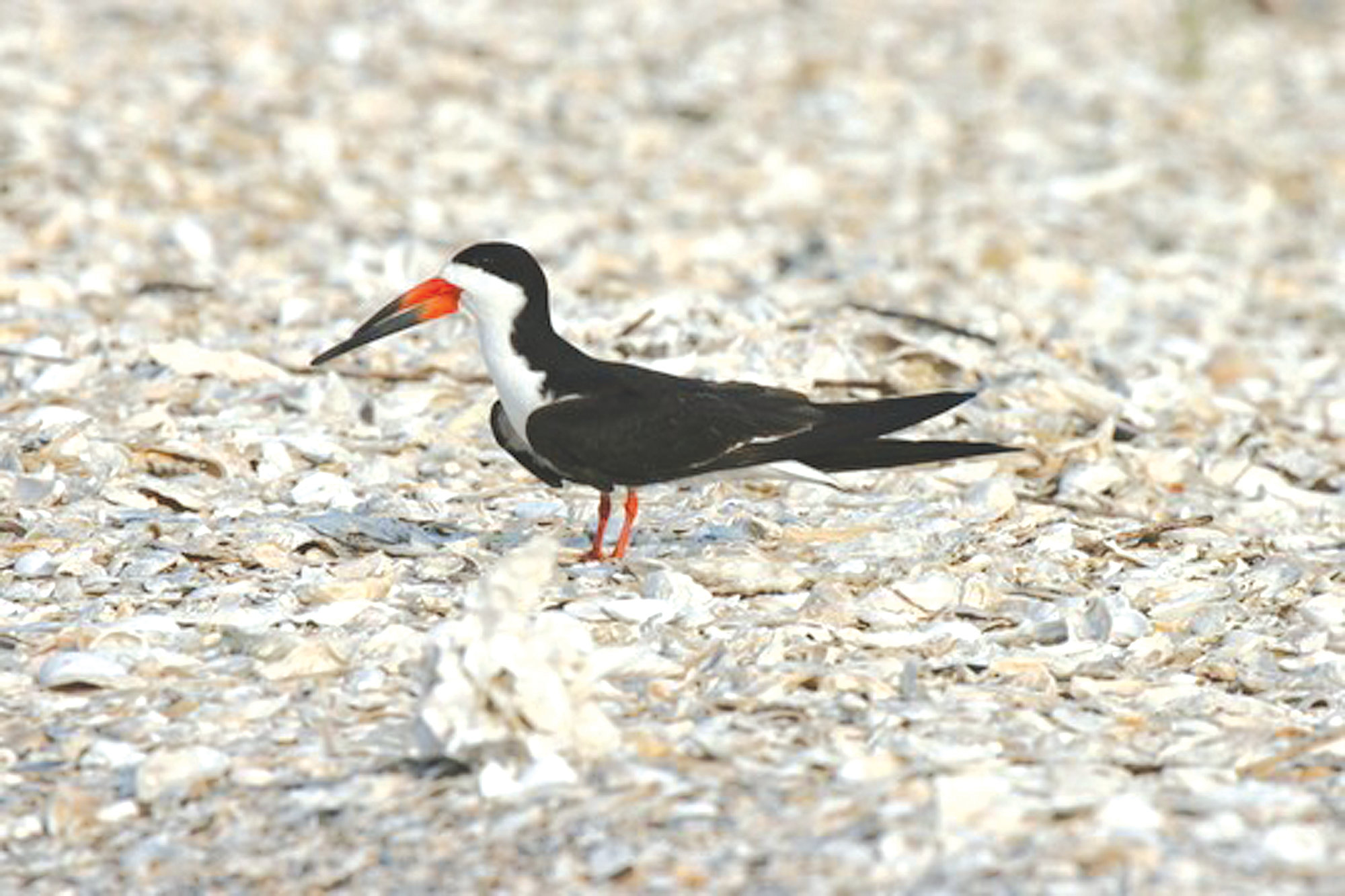DNR warns beach visitors, boaters not to disturb nesting black skimmer birds
S.C. Department of Natural Resources avian biologists would like to remind residents and visitors to coastal South Carolina that if they are boating to a barrier island in the next few weeks, do not cause birds at the water’s edge to fly. Give them space.
This time of year, most eggs have hatched and young seabirds are being fed by their parents on the beach and stretching their wings to prepare for their first flight. Black skimmers nest later than the other seabirds and still have eggs and chicks that can’t fly. Black skimmers, an elegant seabird, get their name from their unusual foraging behavior and coloration. Skimmers' long wings are black above, and they use their bicolored orange-and-black bill to skim the surface of the water for fish and shrimp.
You may see skimmers resting on the beach with their head and bill on the sand to stay cool. Black skimmers nest on islands, shell rakes and remote beaches that have little vegetation. They lay their eggs directly on the sand during the hot summer months from May to July. SCDNR coastal bird staff survey the entire South Carolina coast via a small plane to locate and count nesting colonies of seabirds such as black skimmers. This year they nested on islands in the Cape Romain National Wildlife Refuge, Shutes Folly and Deveaux Bank Seabird Sanctuary. Nests are counted during peak incubation periods to track population levels. Black skimmers may nest in the same areas that people wish to use for recreation, thus it may be necessary to temporarily close areas to people and boats until the skimmers finish nesting.
Black skimmers are extremely sensitive and will abandon their nesting effort when too much disturbance occurs. Black skimmers are in decline and of high conservation concern. In many states, they are listed as endangered. John James Audubon, a famous ornithologist and artist, recorded a colony of 20,000 skimmer nests in the Cape Romain region of South Carolina in 1844. There are many other records from coastal areas during the 1800s of skimmer colonies totaling 10,000 pairs. This year we counted 881 skimmer nests, just a fraction of what our coast once had. Cape Romain NWR had 63% of the state’s total nests and was the only region in the state to have successful nesting.
DNR staff was excited to see young birds almost flighted last week on Cape Island, a barrier island in the north part of Cape Romain NWR. Thanks to management of the colonies and boaters' compliance, this success gives hope for the species.
More Articles to Read

